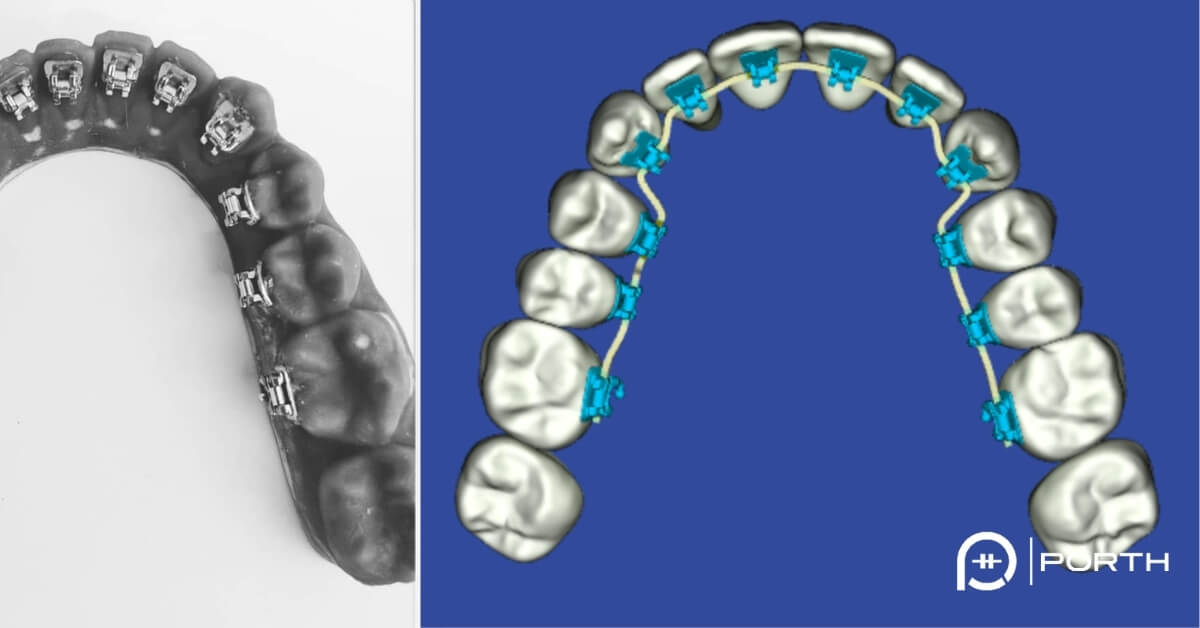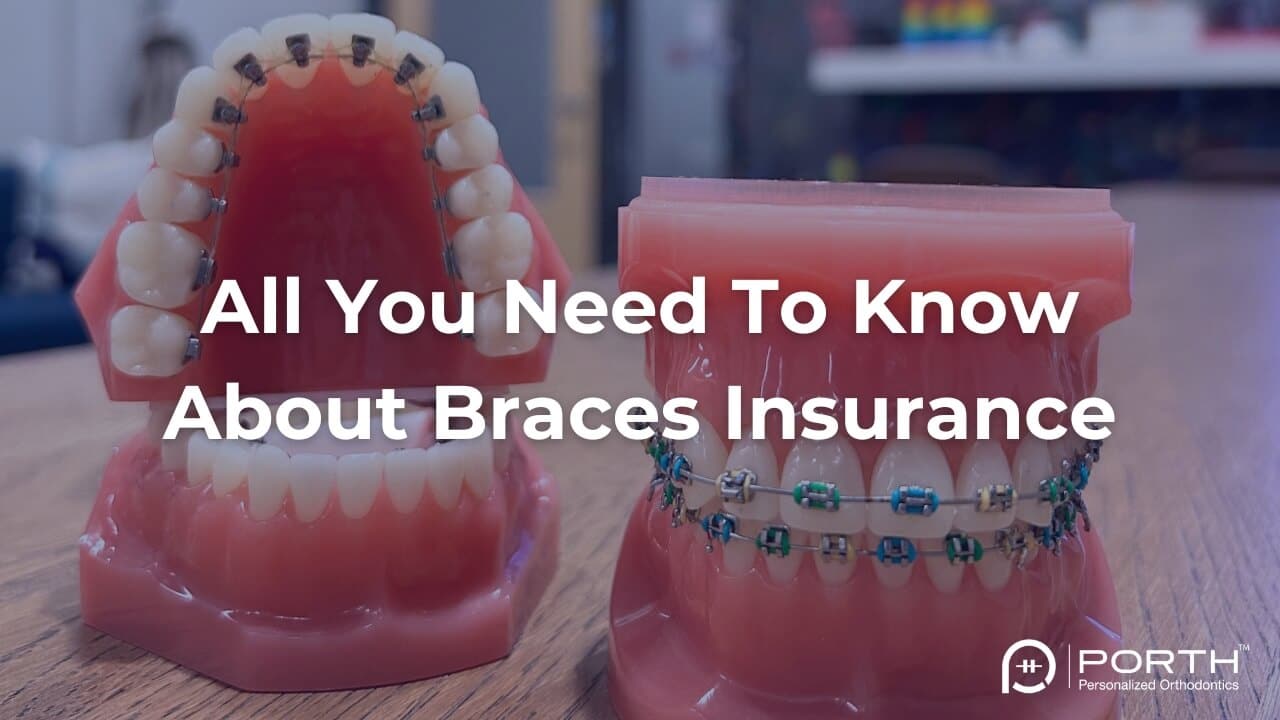Table of Contents
Step #1: Choose the Right Dental Professional
– Type of Dentists
– A Comparison: Dentists & Dental Specialists
– Which Dentist or Dental Specialist Do You Need to See?
– Signs you need to see a dental care provider
Step #2: Understand Your Dental Insurance Options
– What Is Dental Insurance?
– Common Dental Insurance Terms
– What Are HSA and FSA?
– What Are Dental Discount Plans?
– Dental Insurance Alternatives
– A Comparison: Three Main Types of Dental Insurance
– Dental Insurance and Your Orthodontic Care
Step #3: Locate Your New Orthodontist or Dentist
– Search Online
– Check with Your Insurance Provider
– Ask Your Friends and Family
– Ask Your GP for Recommendations
– Examine the Doctor’s Qualifications
– Gather Proof
Choosing the Best Orthodontist or Dentist: A Summary
FAQ About Finding a New Dentist or Orthodontist Near You
Looking for Braces in Sammamish?
Taking care of your teeth is easy.
But finding the right dental care in the United States? Not so much.
If you’re struggling to choose the right dentist or orthodontist or need help understanding dental insurance, then you’re not alone. Most people are overwhelmed by all their options.
In this guide, we’ll explain the three steps you can take to find the best dental care provider and plan your treatment.
Step #1: Choose the Right Dental Professional

Just as there are specialist doctors who treat different medical problems, there are dental specialists who focus on treating specific dental problems like dental surgery or straightening teeth.
So the first step in choosing the right dentist is to identify which dental professional you need to visit.
To choose a dental professional, it may help to first determine which dental treatments you need.
Here are some common dental services:
- Comprehensive dental checkups
- Dental cleanings
- Treatments for toothache
- Teeth straightening
- Treatment for jaw problems
- Wisdom tooth issues
Types of Dentists
All dentists in the United States begin their careers with an average of eight years of study: four to get a bachelor’s degree, and then another four spent in dental school to obtain a DDS (Doctor of Dental Surgery) or DMD (Doctor of Dental Medicine) degree.
But for some dentists, the journey doesn’t end there.
Some dentists study for an additional two to four years to become specialists.
Currently, there are 12 areas of dental specialty that are recognized by the American Dental Association.
We won’t cover them all here, but we’ll compare the ones you are most likely to meet.
General Dentist
You’ll see a general dentist for basic dental care and cleanings. Dentists focus on rebuilding damaged teeth. Many general dentists brand themselves as “family dentists” or “cosmetic dentists” depending on the treatments they like to offer.
Pediatric Dentist
Pediatric dentists treat children under the age of 18. Their dental offices have child-sized dental equipment and fun child-friendly decor. General dentists can also treat your children, but you might need to visit a pediatric dentist if your child has special needs or needs complex treatment.
Oral Surgeon
An oral surgeon is experienced in procedures like complex tooth extractions, jaw reconstruction, and placing dental implants.
Endodontist
Endodontists specialize in treating problems inside your teeth. If you suffer from tooth sensitivity, an abscess, or a toothache, then you may need to meet an endodontist.
Periodontist
A periodontist focuses on treating problems with the bone and gums around your teeth. They also place dental implants and treat gum disease and gum recession.
Prosthodontist
If you have lost all or most of your teeth, a prosthodontist can make a set of false teeth, or dentures, for you. Some prosthodontists focus on esthetic veneers and crowns.
Orthodontist
Do you have crooked or crowded teeth? An orthodontist is specially trained in the science of repositioning teeth and can help you get a straighter smile. Orthodontists also help fix problems with jaw bones for kids and adults.
Not only do straight teeth look attractive, but they’re also healthier than crooked teeth.
Orthodontic treatment is popular for kids and teenagers, but even adults can benefit from braces.
A Comparison: Dentists & Dental Specialists
| Dental Professional | Average Years of Education | What They Do | What They Can Treat |
| General Dentist | 8 | Provide basic dental restorations like crowns and fillings and sometimes implants | Toothache Tooth decay Tartar buildup Damaged teeth |
| Pediatric Dentist | 10 | Provide dental treatment for children | Children who are very young or extremely nervous about dental treatment Children with special needs |
| Oral Surgeon | 12 | Surgically repair injuries to the face or jaw and extract wisdom teeth | Injured jaw or facial bone Impacted wisdom teeth TMJ pain |
| Endodontist | 10 | Treat problems on the inside of teeth | Abscessed (infected) teeth Tooth pain Tooth sensitivity |
| Periodontist | 11 | Treat gum disease and gum recession and place dental implants | Gum disease Missing teeth Gum recession Gum grafting and repair |
| Prosthodontist | 11 | Rebuild severely damaged teeth Cosmetic veneer Implant supported crown and bridge | Missing teeth Rebuilding worn teeth |
| Orthodontist | 10 | Straighten crooked teeth and correct bite problems | Crooked, gapped, or crowded teeth Painful bite Open bite Deep bite Corrective jaw surgery |
Which Dentist or Dental Specialist Do You Need to See?
If you have a specific dental concern, then you can contact a specialist directly.
Here is an example.
Visit an orthodontist if you want straighter teeth or if you’re curious about how clear aligners work. Orthodontists usually don’t need a referral from a dentist to help you.
An orthodontist will work with your general dentist to make sure your teeth stay healthy throughout the course of your treatment. Sometimes, a general dentist will assist an orthodontist with your treatment by building up small front teeth.
If you don’t have a particular complaint, however, then schedule a checkup with a local general dentist. He can later refer you to a specialist, if needed.
Signs you need to see a dental care provider:
- You hate your smile or feel too embarrassed to smile around others
- You have difficulty eating or speaking because of missing or crooked teeth
- You can’t remember when you last had a dental cleaning or checkup
- Your gums are bleeding and/or receding
- You have a visibly damaged tooth
- You suffer from bad breath
- Your mouth is in pain
Step #2: Understand Your Dental Insurance Options

Now that you know which dental professional you need to see, the next step is to figure out how you will pay for your treatment.
Many adults in the United States receive dental benefits (also called dental insurance) from their place of work.
You may already have dental insurance through your employer, and it’s important to understand your benefits because they can help you decide which dentist to see.
Dental insurance is a bit confusing at first, but we’re going to clear that up next.
What Is Dental Insurance?
A dental coverage or benefits plan is a policy that you pay a monthly premium for.
Although it is often called “insurance,” dental coverage is not the same as medical insurance or automobile insurance. You pay for those policies with the expectation that they will cover you in the event of an accident or illness.
Dental insurance doesn’t work that way. It doesn’t kick in and cover all of your expenses when you have an unexpected dental problem.
Instead, dental plans cover a predetermined number of benefits with certain limitations.
Your plan likely covers a set amount of dental cleanings and X-rays per year. There may also be a limit for the dollar amount or frequency of other treatments that your insurance covers.
DID YOU KNOW?
Many dental insurance plans follow a basic 100-80-50 pattern. This means that they pay 100% of the cost for preventive treatments, 80% for basic dental procedures like fillings and root canals, and 50% for major procedures like crowns and dentures.
If you have dental insurance through your employer, you are already paying for the benefits, so you should use them.
Talk with your employer or contact your dental coverage provider to learn what your benefits are and where you can find an in-network dentist. If you aren’t happy with your current dental benefits, ask your employer about other plan options.
Common Dental Insurance Terms
Annual maximum – The total cost of treatment that a dental plan covers in a 12-month period.
Copay – A fee you have to pay at each dental appointment.
Deductible – The minimum amount of treatment expense you must pay for before your dental plan starts to cover your costs. You may not have to pay a copay until your deductible has been met.
Dental HMO – “Dental Health Maintenance Organizations” are more affordable than PPOs, but they are more strict about which dentists their members can see. HMO dentists enter into a contract to see a minimum number of HMO members.
Dental indemnity plan – A fee-for-service plan with high deductibles and monthly premiums. You can pay any dental provider for any treatment and then send a claim to your insurer to be reimbursed. You might wait a long time for reimbursement, however, and you may only get partial compensation.
Dental PPO – “Dental Preferred Provider Organizations” allow their members to choose to see in-network or out-of-network care providers. While PPO plans offer more flexibility in choosing a dental care provider, they also come with higher premiums and more deductibles and copays.
Monthly premium – The amount you pay each month for a dental benefits plan. It is usually subtracted directly from your earnings.
Preventative treatment – Procedures that everyone needs on a regular basis to maintain good dental health. These can include dental cleanings and checkups, X-rays, fluoride treatments, and dental sealants.
Waiting period – The amount of time you must wait after starting a new dental plan before you can use the benefits.
What Are HSA and FSA?
HSA is short for “health savings account.” Similarly, FSA stands for “flexible spending account.”
A health savings account is a special account that you set up with your employer. It allows you to set aside pre-tax dollars from your salary which can be spent on paying for medical treatment. The HSA is in addition to your dental insurance plan. In fact, you can only open an HSA if you have a dental insurance plan with a high deductible.
With a high deductible, you will pay a significant amount of money for your treatment before your insurance policy takes over. The HSA lets you save up, invest, and then access untaxed money to help you pay for those fees.
An FSA works like an HSA, but you don’t need to have an insurance policy to open the account. Additionally, your employer will own the account, so you will have less control over the funds. Both FSAs and HSAs provide tax advantages by giving you access to tax-free funds for your medical and dental care.
There is a limit to the amount of money you can contribute to either an HSA or FSA within a year. Extra funds left in an HSA at the end of one year roll over to the next. FSA funds have more limitations since the account is owned by your employer. If you have an HSA, the account and the funds with it go with you when you change employment.
What Are Dental Discount Plans?
A dental discount plan (also called a dental savings plan) is an alternative to a traditional dental benefits plan.
Instead of paying a monthly premium through your employer, you can purchase a discount plan online. This plan is a paid membership that entitles you to discounts on dental treatments at participating dental practices.
You will pay an annual fee for the membership, and you can choose from a list of dentists who participate in the discount plan. This kind of dental “insurance” won’t cover the cost of major treatments like braces.
Dental Insurance Alternatives
An in-house financing plan is a helpful alternative to regular dental insurance.
This plan is arranged by the dental practice itself. You will sign an agreement with the practice to pay a yearly fee that covers preventative services and entitles you to a significant discount on other treatments.
In-house custom financing plans are simple because they cut out the middleman insurer. You can communicate directly with the dental practice to understand your benefits and work out a flexible payment plan.
Even some specialty dental practices like orthodontic offices offer in-house payment plans. These are helpful because many dental benefits plans don’t provide orthodontic coverage for adults.
In-house financing can help you to afford the cost of braces more easily.
A Comparison: Three Main Types of Dental Insurance
| Dental Benefits Plan (“Insurance”) | Dental Discount Plan | In-House Dental Practice Financing | |
| How to get it | Received from your employer; the premium is paid for out of your salary. Some insurers also sell dental benefits plans directly to individuals. | Apply for and purchase membership online. | Visit a local dental practice. |
| What it covers | Most preventative care, some basic treatment, partial coverage for major treatment. | Provides you with a discount on basic and preventative dental care. | Varies by practice. Covers preventative treatments and offers a generous discount on basic and major treatments. |
| Benefits | You may have access to a wide range of participating dentists. | An affordable alternative if you do not receive dental benefits because of being self-employed or a part-time employee. | Plans are highly flexible and customizable. You will work one-on-one with the practice of your choice to create a financial plan that suits your unique treatment needs and circumstances. |
| Drawbacks | You may have limited options for treatment coverage plans. Most new plans come with a waiting period. High premiums, deductibles, and copays could make it difficult to afford paying for treatment that is not covered by your plan. | Treatments are simply “discounted” and not covered, so you will still pay for treatment. You may have fewer dentists to choose from. | Not all practices offer the same plan, so you won’t know your financial options until you get established at a dental practice. |
It is good to use dental benefits if you already have them.
But you shouldn’t let your dental benefits plan determine the kind of dental treatment you need.
The most important thing is to find a dentist or orthodontist you can trust and who can give you the care you need. You can always change your dental insurance plan or negotiate with your employer to make sure your dental plan suits your needs.
The American Dental Association is an excellent resource for more information on dental insurance.
Dental Insurance and Your Orthodontic Care
What about getting braces? How can your dental benefits help?
The good news is that for most insurance policies, there’s no difference in orthodontic coverage for out-of-network versus in-network providers. This means that you can generally see any orthodontist regardless of the dental insurance you have.
However, your orthodontic treatment will only be covered once in your lifetime by your dental benefits policy. If you need to have treatment again, you will either need to pay for it yourself or start a new insurance policy.
When submitting a claim for orthodontic treatment, you can use more than one dental insurance.
What should you do if you don’t have coverage for orthodontic treatment through your dental insurance?
Most orthodontic practices offer interest-free in-house payment plans. Whether you have dental insurance or not, you should seriously consider using one of these payment plans instead.
Step #3: Locate Your New Orthodontist or Dentist

At this point, you should have an idea of what kind of dental specialist you need to see and how you will pay for your treatment.
It’s now time to search for a dentist or orthodontist you can trust.
Search Online
Look up the business details and reviews of dentists and orthodontists near you. A good dentist will have a website with plenty of information about treatments, the practice, and how you can contact them.
Find a Board-Certified Orthodontist Near You
Do you want to find a trusted specialist who can straighten your teeth? Use this directory by the American Board of Orthodontists to locate a Board-Certified Orthodontist.
Check with Your Insurance Provider
Search for dentists in your area that are listed as being in-network with your current dental benefits plan.
Ask Your Friends and Family
You will get the best recommendations from people you already know and trust.
Ask Your GP for Recommendations
If you already have a general dentist but need to see a specialist, then your dentist can refer you to a trusted colleague.
Examine the Doctor’s Qualifications
Research evidence of a dentist’s education, experience, and authority in an area of practice. Look for degrees, memberships, and other distinctions listed on the dental practice website.
Gather Proof
Take a look at before-and-after photos of patients a dentist has already treated. Read patient testimonials about that practice. Call the dentist or orthodontist and ask them how many cases they have already completed.
Choosing the Best Orthodontist or Dentist: A Summary
Here are the three main points to take away:
- Choose a dental care provider based on your needs. You can directly contact a specialist like an orthodontist if you already know that you need to see one.
- Understand your dental insurance and financing options. You can choose a dentist from a list of providers who are in-network with or recommended by your insurer. You may already have dental benefits through your employer, so make sure you use them. There are alternatives to dental insurance that you can consider if you aren’t happy with your current dental benefits plan.
- Do a careful search for a dentist or orthodontist you can trust. It is more important to have a dentist you feel comfortable with rather than to pick one based on your dental insurance plan. Search online for dentists near you and research their credentials, experience, and patient reviews. Ask trusted friends and family for their recommendations.
FAQ About Finding a New Dentist or Orthodontist Near You
How do I find a dentist that accepts my insurance?
Simply contact your dental insurance provider to get a list of in-network dental care providers.
What are the qualities of a good dentist or orthodontist?
Most dentists are excellent at problem-solving and paying attention to small details. Besides this, you can choose a good dental care provider based upon how comfortable you feel in their practice and how well you can communicate with them.
How do I check a dentist’s background?
There is plenty of public information available about any dentist’s professional qualifications in the United States. For example, you can look up a dentist’s license by state.
What if I don’t want to see the orthodontist my dentist recommends?
You do not have to see a certain orthodontist simply because a dentist recommended them. Your dentist may have a very good reason for recommending someone in particular, but you can visit any orthodontist you wish.
What if my dental insurance doesn’t cover braces?
It’s common for dental benefits to stop covering orthodontic treatment after a certain age. If you find yourself without insurance, you can still see an orthodontist and get the treatment you need. Look for orthodontists near you who offer flexible financing and discounts.

Looking for Braces in Sammamish?
Dr. Rooz Khosravi is a Board-Certified Orthodontist in Sammamish who offers a complete range of orthodontic treatments for kids and adults here at PORTH. Our practice works with most major dental insurance plans and we offer flexible in-office payment options. Dr. Rooz is the newest orthodontist in Sammamish, but he brings decades of unrivaled orthodontic expertise to the Greater Seattle Area.
We are now accepting new patients, so give us a call at (425) 526-2060 or book a free initial consultation.



